From the ![]() Sweets Issue
Sweets Issue
Baklava. Turkish delight. Viral videos of ice cream vendors pranking unsuspecting tourists. Turkey is known globally for its sweets. Here coffee always comes with a treat on the side, and if you want to have a dessert with lunch and dinner, why not? As a popular Turkish proverb goes: “A man without a belly is like a house without a balcony.” And in a densely populated city like Istanbul, no one wants to be without a balcony.
Puddings, muhallebi in Turkish, play a pivotal role in the Turkish dessert canon with a fascinating range of flavors and ingredients. So much so, there is an entire genre of restaurants dedicated to it: muhallebici, or pudding shops. Equal parts diner and dessert shop, these casual eateries are more than just a place to satisfy a sweet tooth; they’re a glimpse into a bygone era.
Istanbul’s pudding shops are perhaps best known outside of Turkey for Alan Parker’s notorious 1979 film, Midnight Express. In the movie—long banned in Turkey for its derogatory portrayal of Turks—the main character goes to a seedy muhallebici to buy hash. But in reality, pudding shops are a lot more innocuous.
“Sociologically, it was always a safe area,” says Aylin Öney Tan, a Turkish food historian and columnist for the Hürriyet Daily News. “For a woman to walk in a male-dominated coffee house was unthinkable in the past, but a muhallebici was a safe place for girls to go.”
Muhallebecis tend to open early and close late, making them an ideal place to meet a friend, kill some time, or simply get a snack.

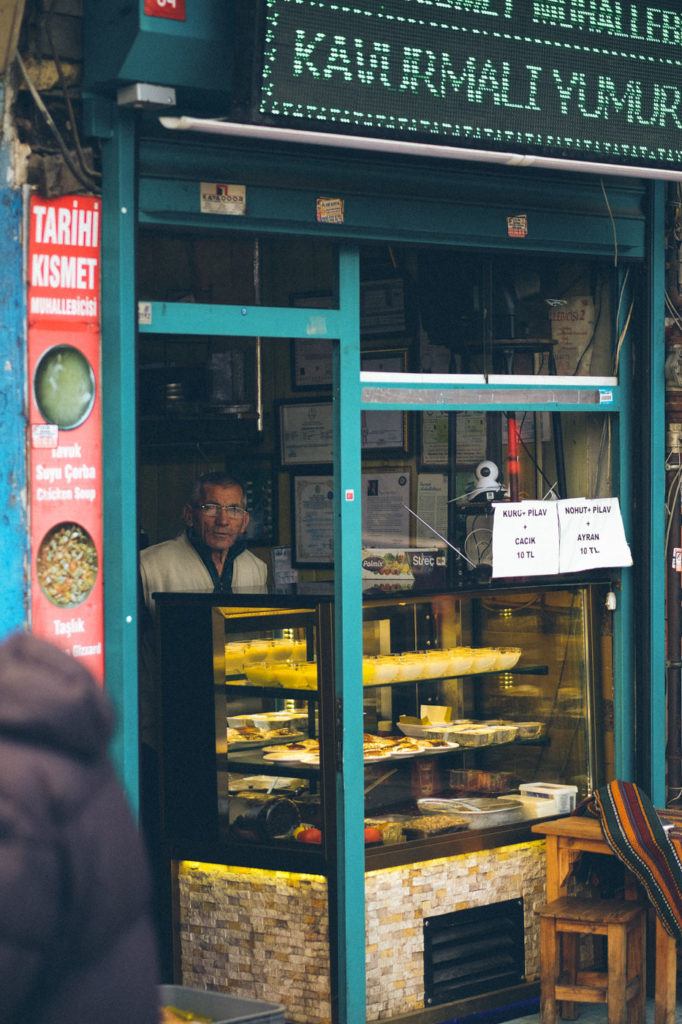
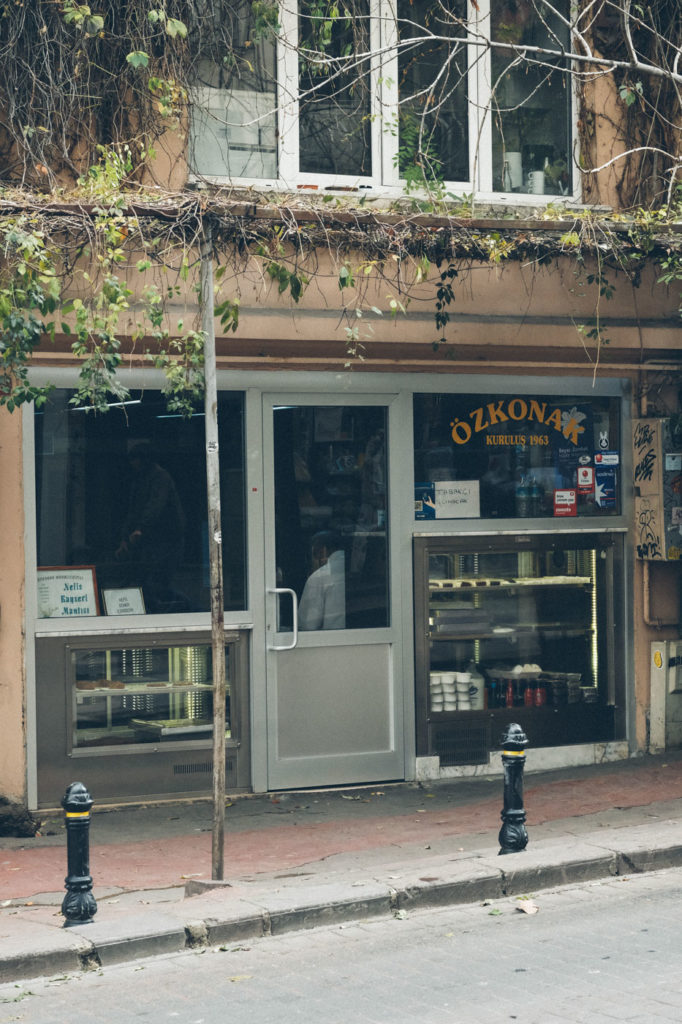
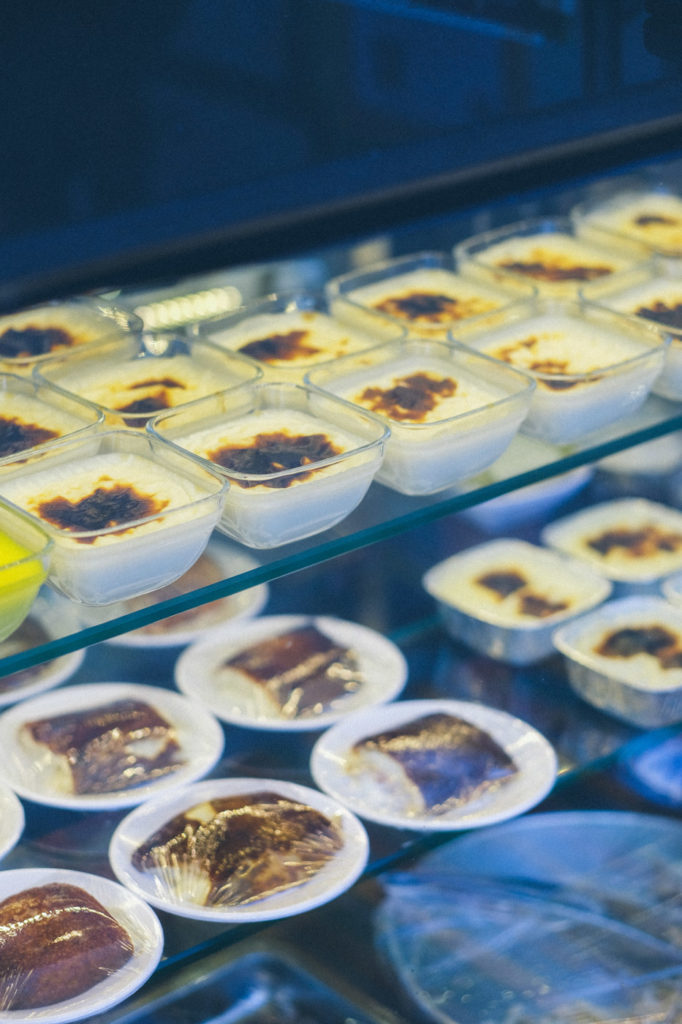
___
It’s been over ten years since I first stepped foot in Istanbul, and during that time I’ve often heard Istanbullus bemoan the loss of the “old” Istanbul. The twentieth century saw the population of the city balloon from around a million inhabitants to over fifteen million.
Like many expats in Istanbul, my perception of the city has been shaped by Orhan Pamuk novels and Ara Güler photographs. Immersed in their noir-esque world, it’s hard not to feel a quixotic nostalgia for a city that mostly disappeared before I was born.
But if there’s still a place where you can can push your face against the glass and catch a glimpse of the old Istanbul, it’s Kurtuluş Street. Unlike nearby Istiklal Street, long since taken over by international brands and throngs of tourists, Kurtuluş Street is the main thoroughfare for one of Istanbul’s last historic neighborhoods. Kurtuluş is still home to much of the city’s Armenian minority, as seen not only by the Orthodox churches and cemeteries, but the bakeries selling Paskalya çöreği, or Easter bread.
It’s on this street where Göreme Muhallebicisi first opened in 1965. Not much has changed since then, down to the wood paneling and its distinctive versions of Turkey’s most famous puddings. I ask the proprietor, İlhan Yalçın (now the third generation to run the family business), their secret.
“We use fresh milk every day,” he says.
Like many Anatolian immigrants to Istanbul, Yalçın’s grandparents named their pudding shop after their hometown—itself now a popular tourist destination. Pudding already was something of a family business, with relatives having opened the now iconic Özkonak Muhallebicisi in nearby Cihangir in 1963.
I meet fellow writer Paul Benjamin Osterlund to chat over Turkish tea at Göreme, who has written extensively about Turkish cuisine. “I’m not a dessert guy,” confesses Osterlund. “But I crave Göreme’s tavuk göğsü.”
Tavuk göğsü translates to “chicken breast;” it’s named for its key ingredient. The idea of a meat-based pudding is shocking, if not offensive, to many Westerners; but Osterlund and I agree it’s unfortunate many foreigners refuse to try it.
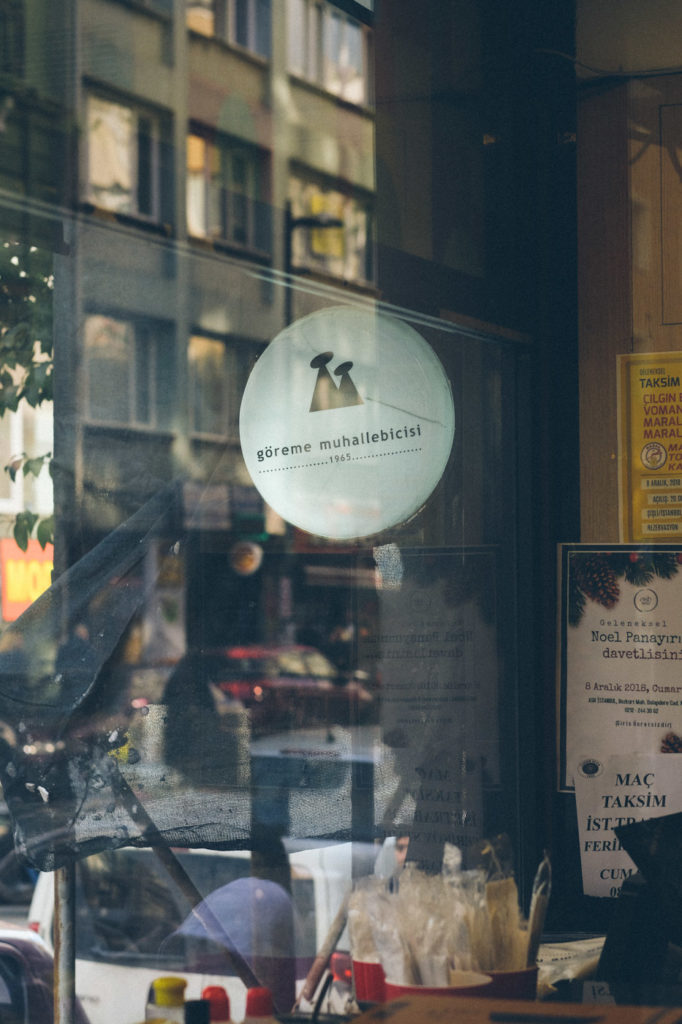
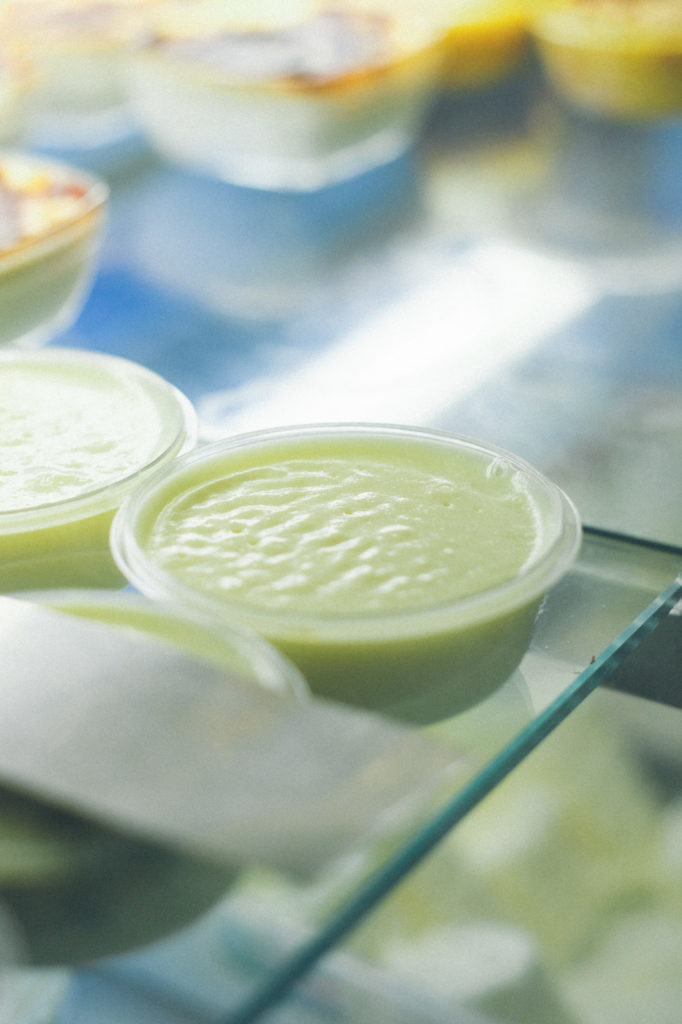
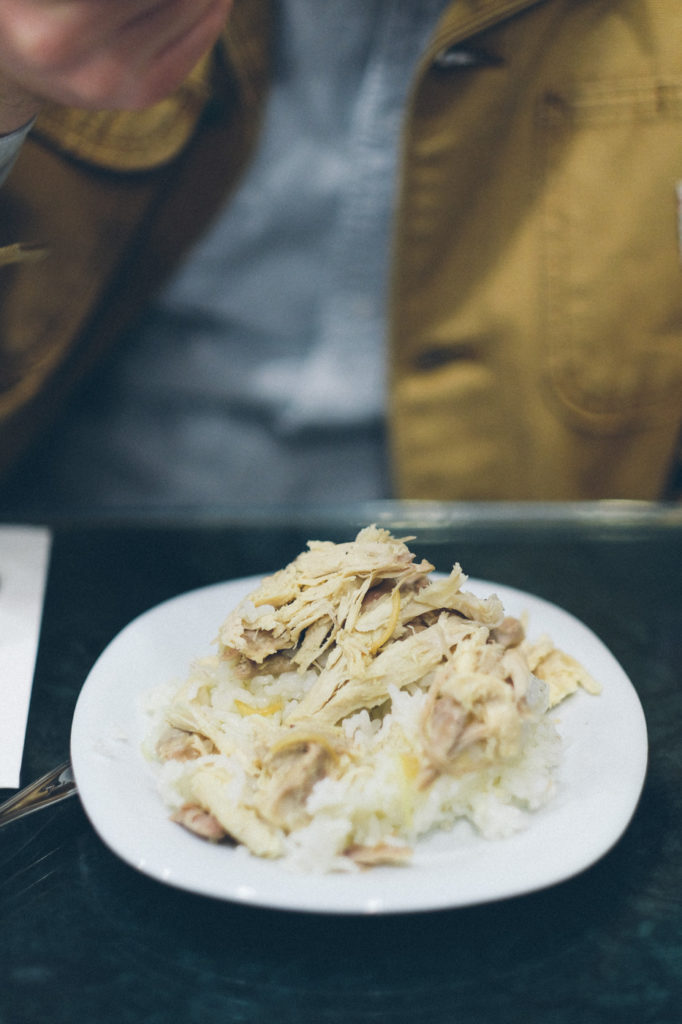

Those who try tavuk göğsü with an open mind will find the stringy bits of chicken breast add both an interesting texture and a surprising depth of flavor. The umami-rich dessert dates back to Ottoman times, when the dessert was a popular dish in the royal court.
My favorite variation of tavuk göğsü is kazandibi, the pudding from the bottom of the pot, which is folded in two to create a rich, caramelized crust. Göreme’s kazandibi is unlike any other I’ve had with a chewy, elastic texture that reminds me of Japanese mochi.
But today I opt for another favorite: sakızlı muhallebisi, or mastic pudding. This milk pudding is flavored with mastic, which gives it a distinct juniper flavor. Later, I learn the significance of this ingredient.
“Mastic is a resin, with almost a piney aroma. It’s droplets of resin from the pistachio tree,” says Tan. “It’s found almost exclusively on the Aegean coast of Turkey and the Greek island of Chios. It’s still only the Greeks and the Turks that love the aroma. Of course, in Ottoman times there were no borders.”
The most popular—and ubiquitous—Turkish pudding is sütlaç, or rice pudding. Rice pudding transcends many culinary cultures, from India’s kheer to Latin America’s arroz con leche. But the Turkish version has a unique variation: after the pudding is cooked on the stove top, it’s baked in the oven until the top is caramelized, or even burnt.
Sütlaç is available practically anywhere in Turkey—not just in pudding shops, but in most restaurants. Even fine-dining restaurant Neolokal concludes its seven-course, hyper-seasonal tasting menu with its modernist interpretation of the dish.
For a classical version that doesn’t require a reservation, you needn’t look further than Saray Muhallebicisi, which has been making the pudding since 1935. The secret to their success is explained by a poster on the wall of their Teşvikiye shop that promises “straight from our water buffalos to your table.”
Water buffalo milk is prized for being richer and sweeter by comparison to cow’s milk, with a higher butterfat content. And for this vertically-integrated operation, it’s a key to their success.
“It’s about the quality of the local ingredients,” Tan says. Compared to European-style puddings, which usually feature cream and eggs, Turkish puddings are traditionally based on three ingredients: milk, sugar and starch (usually rice flour) and slowly cooked until it thickens. Saray’s water buffalo farm claims to be the largest in Turkey, with over 1,300 buffalos producing three-and-a-half tons of milk per day. Vertical integration, it turns out, is a common theme among the best pudding shops in Turkey. For these artisans, producing their own milk in-house is the only way they can maintain their exacting standards.
Saray’s sütlaç has a perfect golden brown crust, which gives way to a creamy base layer. The different textures and levels of caramelization create a complexity of flavor remarkable for a three-ingredient dish.
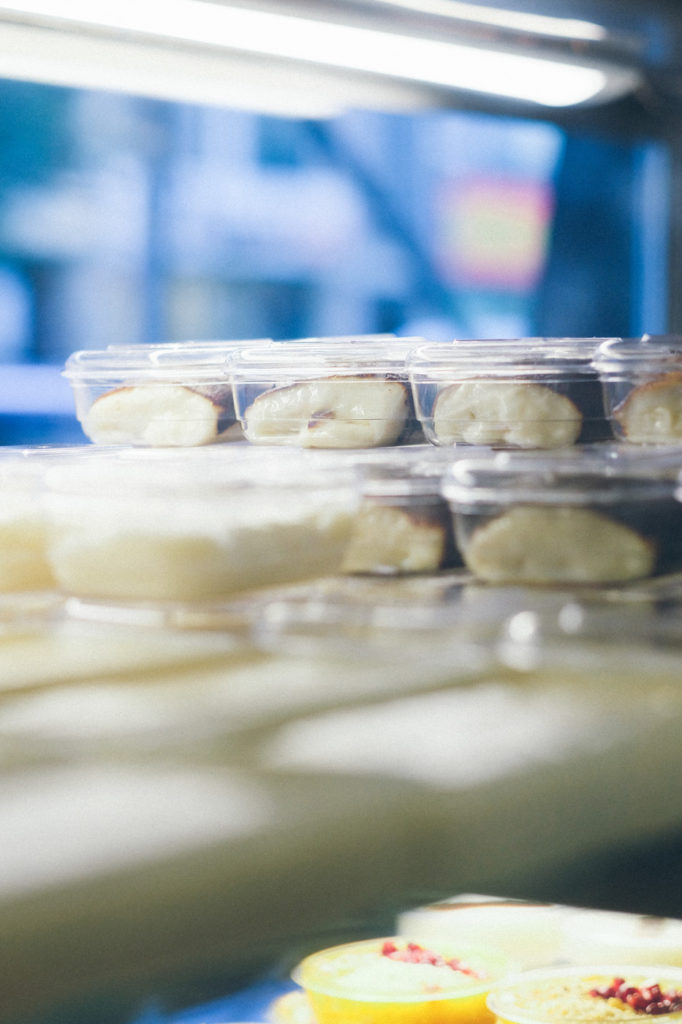
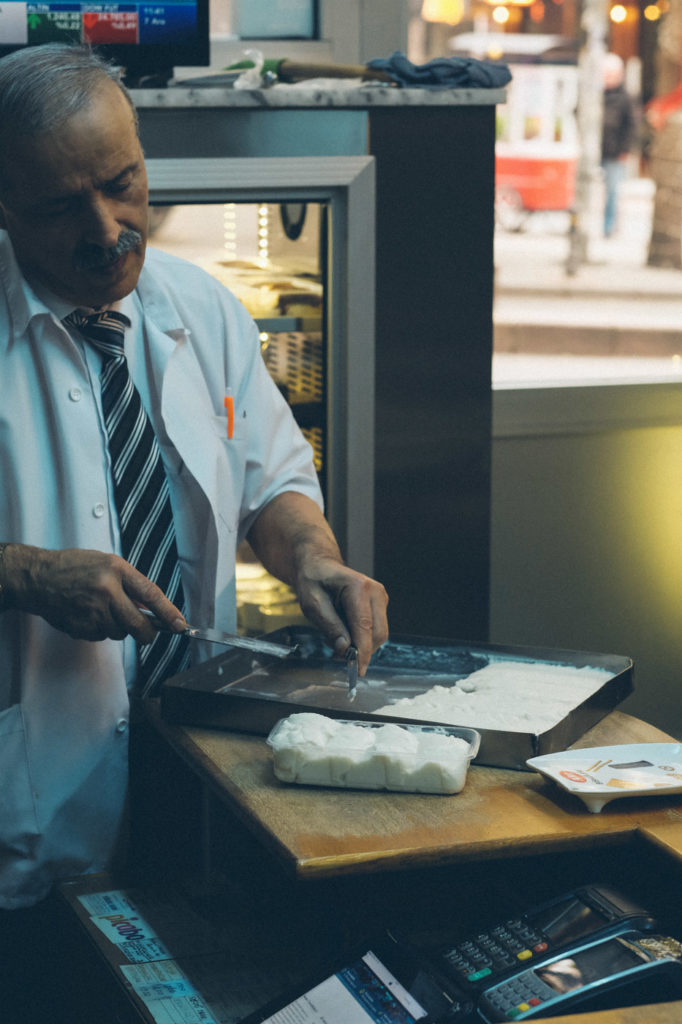
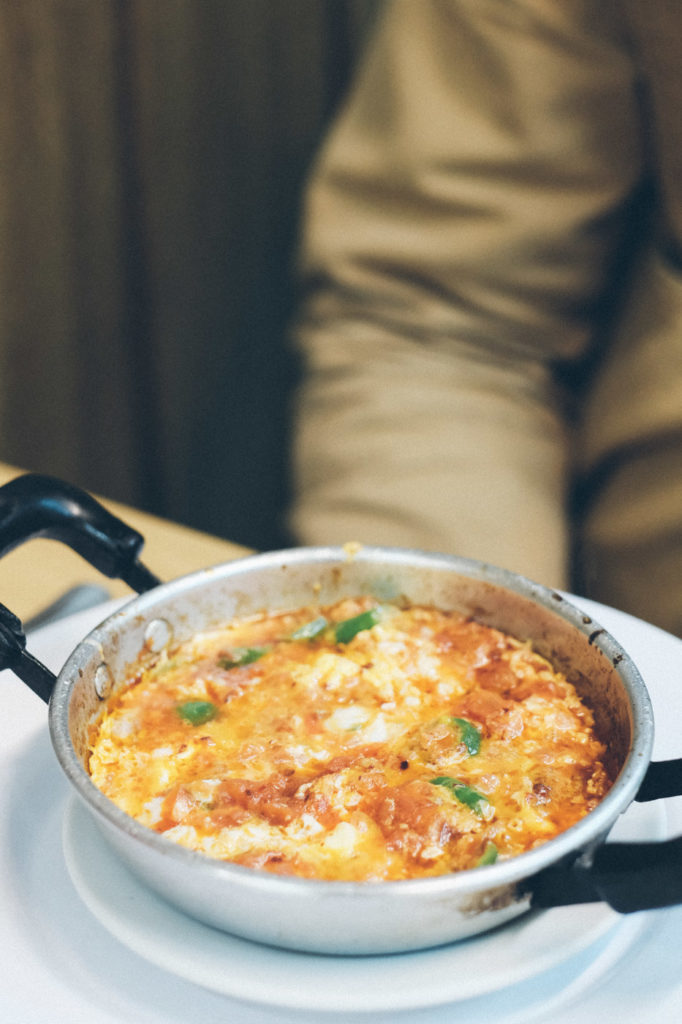
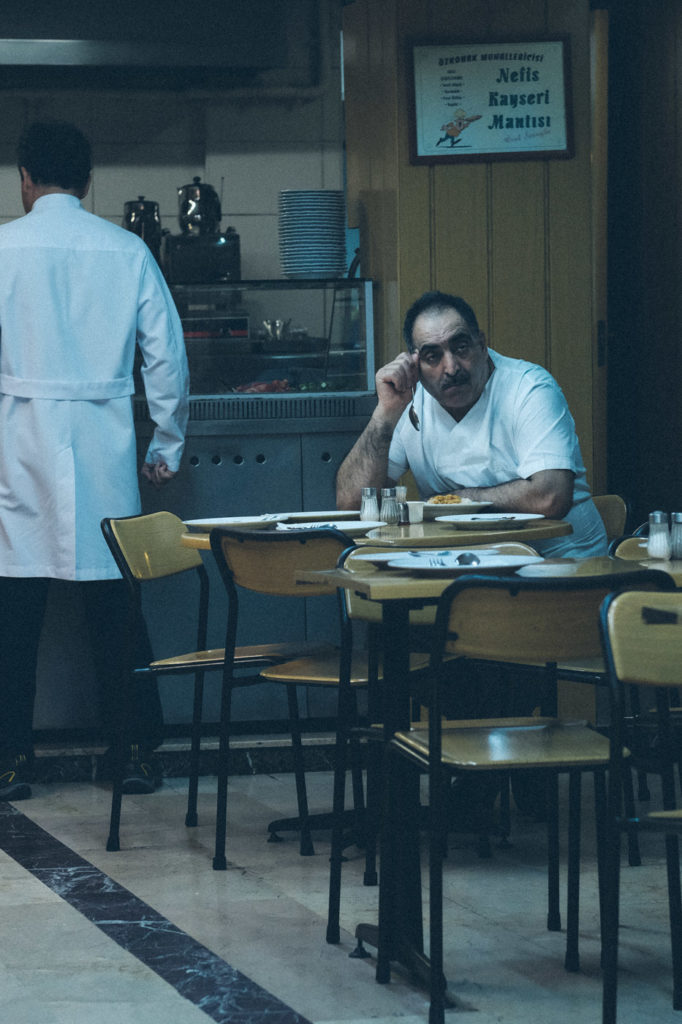
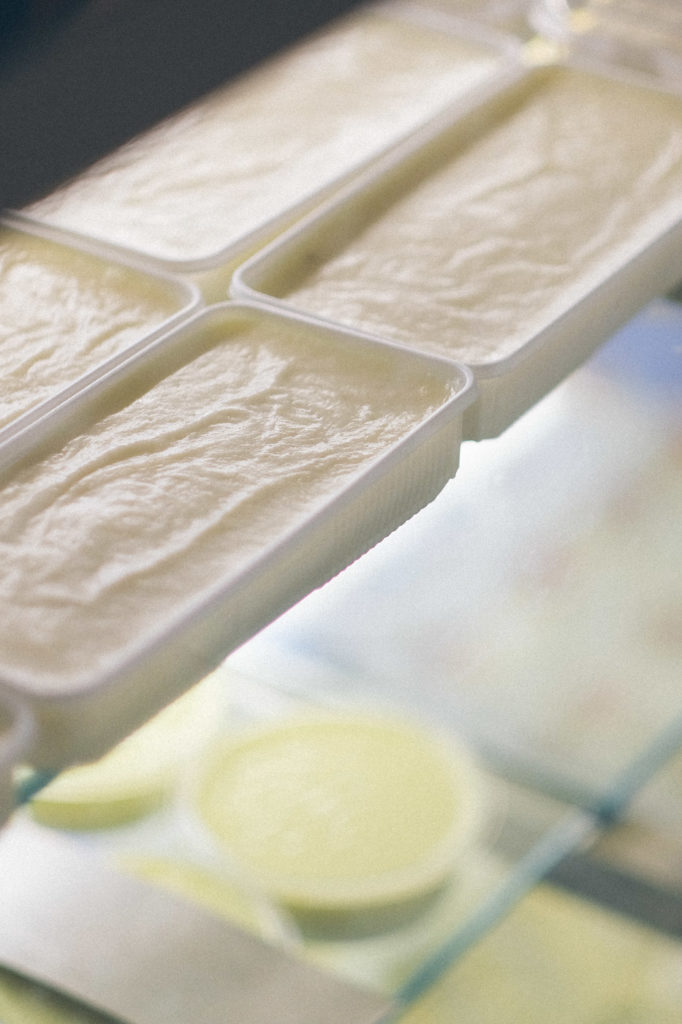
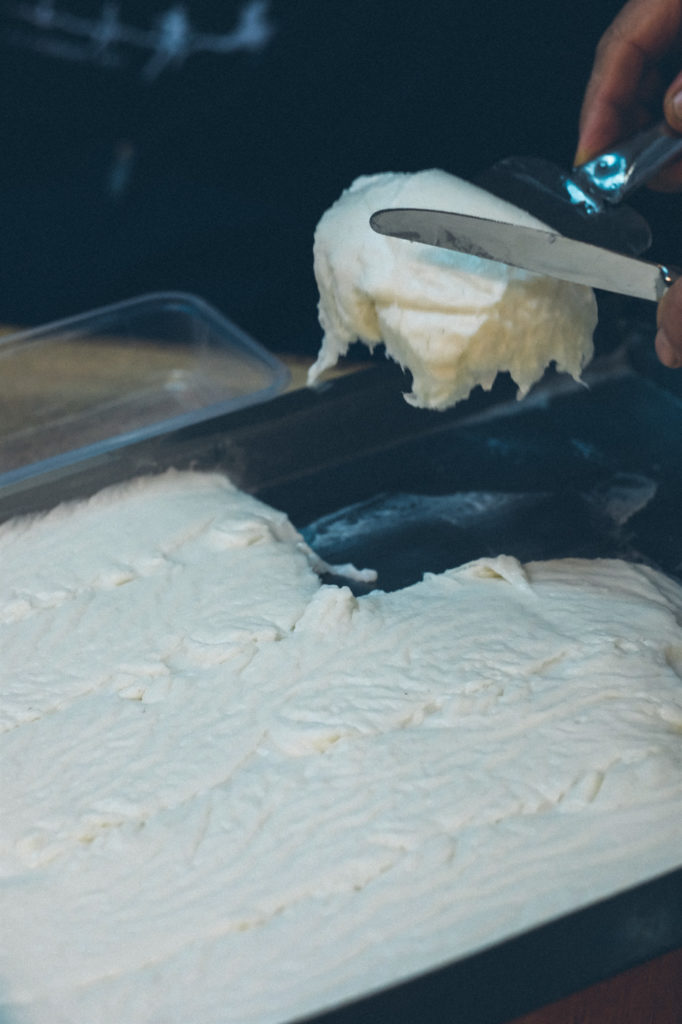
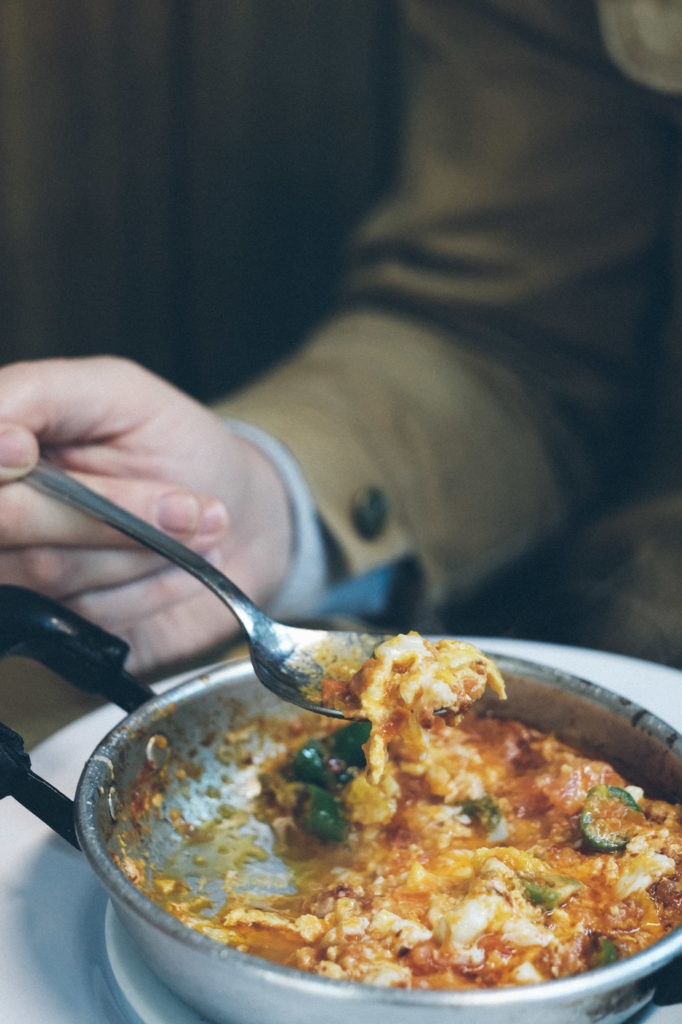
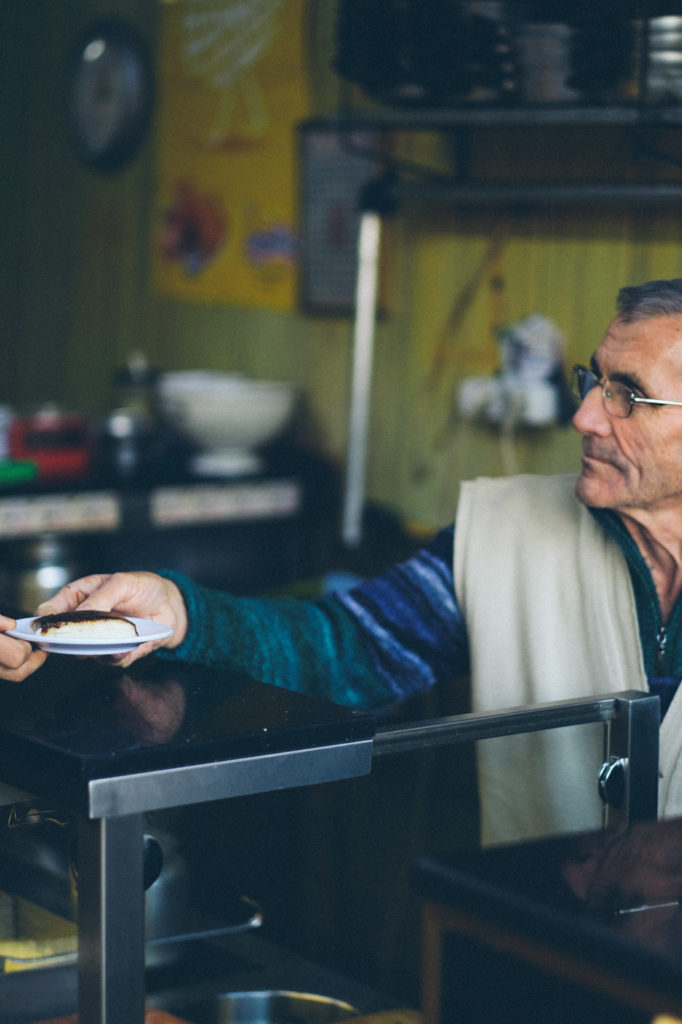
___
“Hole-in-a-wall” is a cliche I try to avoid, but it’s hard to find a more appropriate term for Kısmet Muhallebicisi, which is practically under the metro tracks in the working-class Demirtaş neighborhood, on the south bank of the Golden Horn. My first time there I walk right past the narrow, shotgun-shaped space and have to double back.
In the corner of the restaurant, a small television is playing HGTV dubbed in Turkish. The sparse decor here is a few photo copies of a newspaper article about the shop, a poster for a chicken supplier, and a small, green religious pennant that recites the Basmala in both Turkish and Arabic (In the Name of Allah, the Most Gracious, the Most Merciful…).
A modest assortment of traditional foods—rice, chickpeas, chicken noodle soup—line the entryway cafeteria-style. The restaurant is so small that other customers simply shout their orders from their seats. I count only six chairs in the establishment.
I order a bowl of stewed chickpeas and a plate of chicken and rice. Like most genres of restaurants in Turkey, pudding shops can be expected to have a certain selection of dishes on the menu. I’ve yet to find a pudding shop that doesn’t offer menemen, a dish of eggs, tomato and peppers scrambled together and often compared to an omelette. One can count on a muhallebici to offer a simple but delicious chicken-and-rice dish, served in a perfect dome.
Chicken and rice is a Turkish staple, served in food carts around the city, but tavuklu pilav is typically served with chicken breast. The tavuklu pilav at pudding shops is usually made with dark meat. I learn from Tan there’s a practical reason for this: the ingredients are the leftovers after making sütlaç and tavuk göğsü. “In the past, you couldn’t get just chicken breast,” she says. “You bought whole chickens.”
Most of Istanbul’s iconic pudding shops have embraced franchising their brand, or at least opening multiple locations, in order to survive. But it’s hard to imagine Kısmet opening a franchise; they don’t even have a logo. I enjoy my lunch, but I begin to wonder how the restaurant earned such a stellar reputation amongst Istanbul food bloggers.
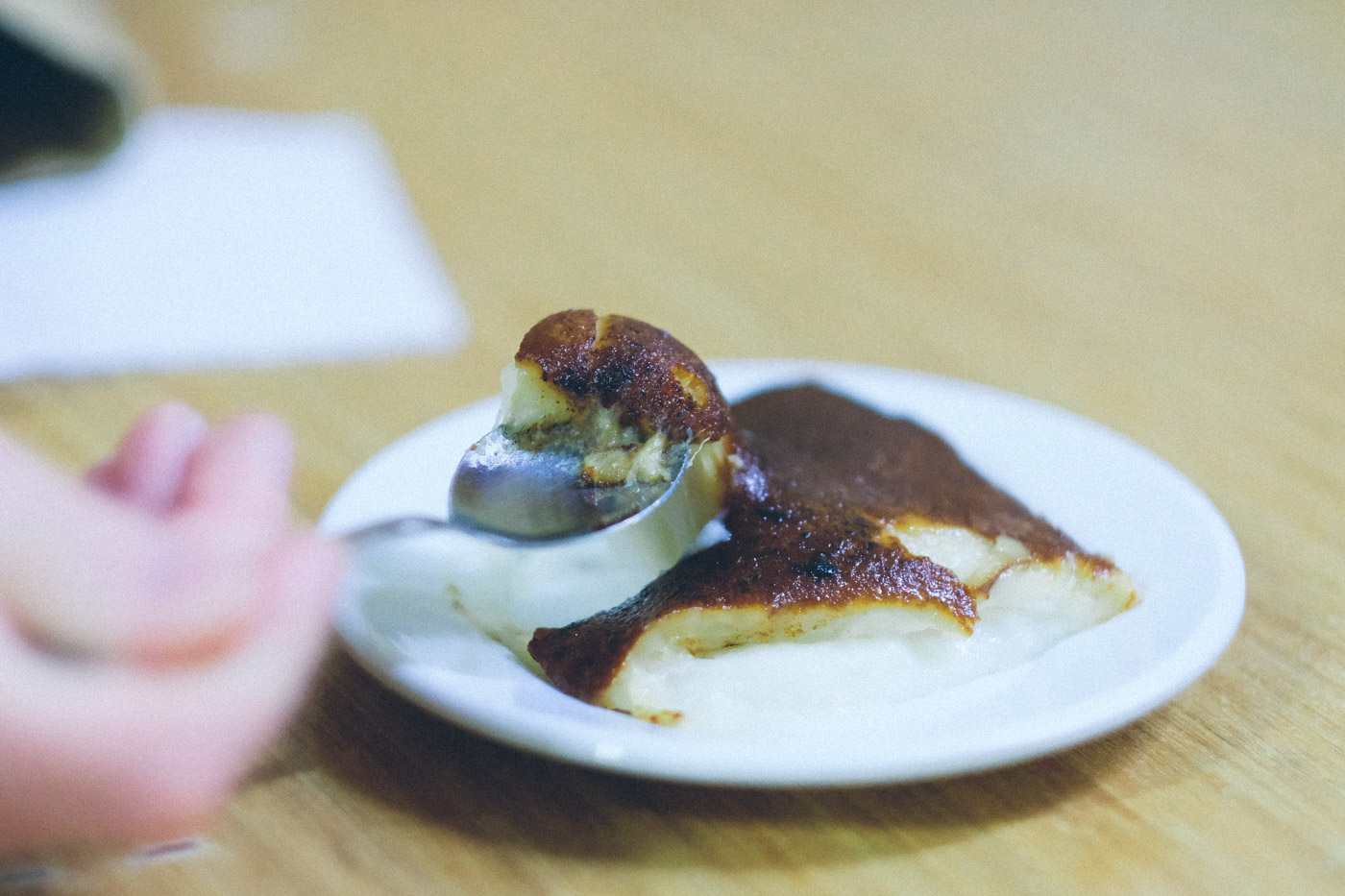
Then the kazandibi comes. It’s thick with a coffee-colored caramelized crust. Compared to the perfectly manicured presentation one finds in most Turkish restaurants, Kısmet’s kazandibi appears haphazard, even sloppy. But one bite is enough to silence my doubts. The deeper caramelization takes the flavor profile in a darker direction, reminiscent of dulce de leche or tiramisu. It’s less elastic than Göreme’s, and more gelatinous, but every bit as delicious. I eat my pudding with a tulip-shaped glass of black Turkish tea, a few leaves floating in the bottom.
My total bill comes to twenty Turkish lira—less than $4 for what amounts to a three-course meal. I pay my check and thank the proprietor. He seems genuinely happy to know I enjoyed the meal.





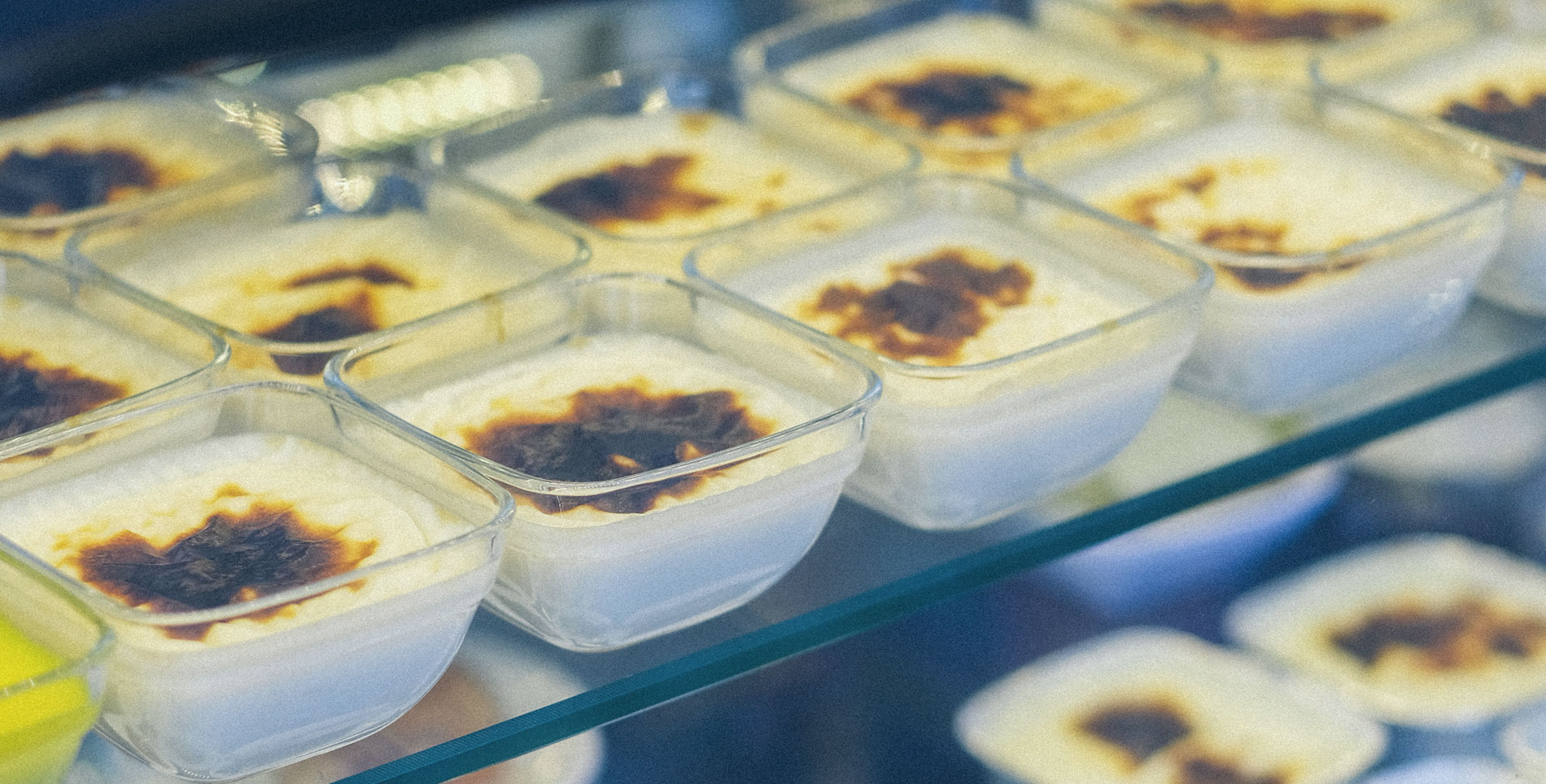

Our comments section is for members only.
Join today to gain exclusive access.